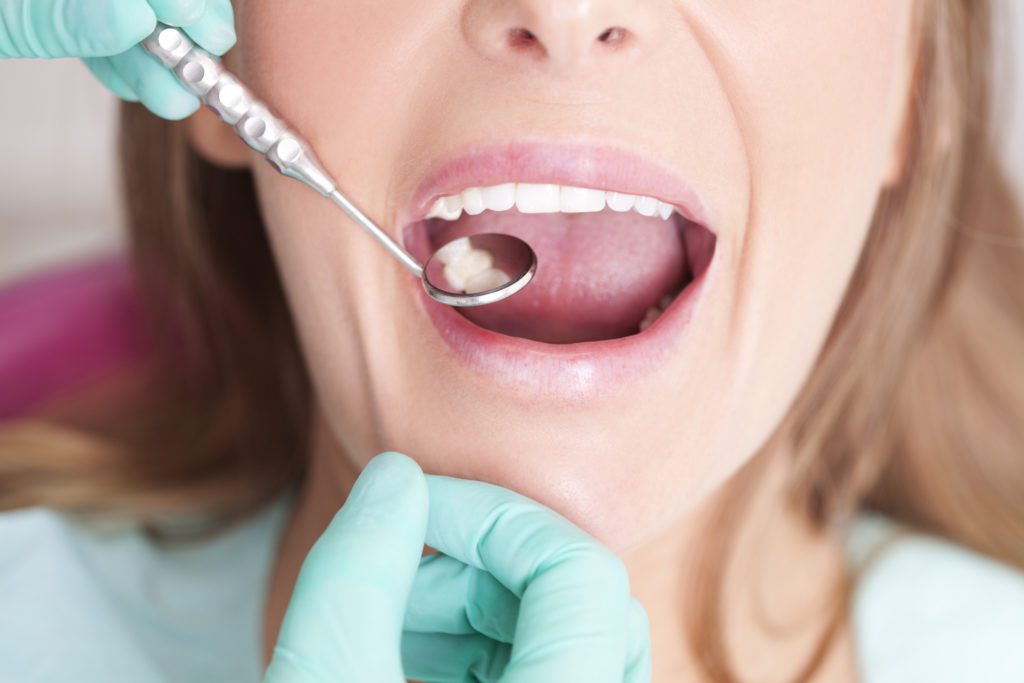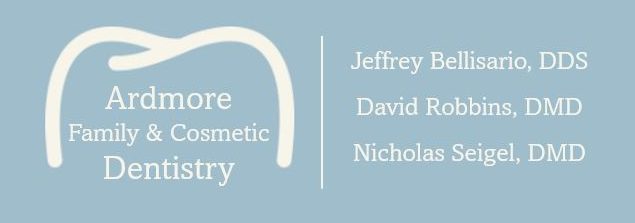Gingivitis, or gum inflammation, is an early stage of gum disease. Also known as periodontitis, gum disease is a highly damaging dental problem affecting the gums and the whole smile. Dr. Jeffrey Bellisario and Dr. David Robbins offer periodontal disease treatment to patients in Ardmore, PA.
With their dental team, they help restore the teeth and gums affected by gum disease with deep cleanings and antibacterial treatments. These treatments remove harmful bacteria that build up beneath the gums. Over time, gum inflammation can impact the heart’s health as the infection enters the bloodstream. Early intervention is the key to reversing the effects of gum disease. Our office also provides restorative dental care treatments to new and existing patients in the Ardmore area.

Stages of Periodontal Disease
Periodontal disease is a progressive infection of the gums that affects millions of individuals worldwide. It can cause serious and permanent damage. There are four main stages that, if left untreated, can progress very quickly. Continue reading to learn more about each stage of gum disease and what can be done to treat them.
Gingivitis
The first stage of gum disease is medically known as gingivitis. This is the earliest and least severe stage of the disease. It begins with plaque and bacteria forming around the gums, which harden and cause them to become red and inflamed. The most common symptoms of gingivitis are bleeding gums and chronic bad breath. Gingivitis can be reversed by brushing and flossing regularly.
Early Periodontitis
When left untreated, gingivitis may progress to the second stage of periodontitis, known as early periodontitis. During this stage, gums begin to recede and form pockets that house bacteria. Gums remain inflamed and red. Dental scaling and root planing are the most common ways we treat this stage of the disease. This deep cleaning removes plaque and bacteria from the gums.
Moderate Periodontitis
The third stage of gum disease is known as moderate periodontitis. Once patients have reached this stage, gum tissue and the jawbone may begin to deteriorate. At this point, damage is irreversible; however, treatment can prevent the progression of the disease. Gum grafting may replace gum tissue and promote gum regeneration.
Advanced Periodontitis
The last and most severe stage of periodontitis is advanced periodontitis. Once patients reach this stage, there is a potential for tooth loss, and a significant amount of jawbone has been lost. Bone grafting, gum grafting, and flap surgery are also options for treatment. Seeking treatment as soon as possible is crucial to prevent tooth loss.
Common Symptoms of Gum Disease
There are many signs of gum disease. Knowing and recognizing the signs and symptoms of gum disease is important so that you can seek treatment as soon as symptoms arise. Signs of gum inflammation and disease often include:
- Bleeding gums when brushing and flossing
- Red and purple-tinged gums
- Bad breath (Halitosis)
- Pus between the teeth and gums
- Sensitive and inflamed gums
- Swollen and tender gums
- Gum recession
Please contact our dental office if you notice changes in your gum health. Our dentists will find the right solution to stop your symptoms. It is very important to seek treatment as soon as possible to prevent gum disease from progressing and causing irreversible damage.
How to Prevent and Treat Gum Disease
There are several ways patients can stop the development of gum disease. Continue reading to learn more about treatment options that can prevent gum disease at home and in our office.
- At-Home Dental Care: Brushing and flossing twice daily helps minimize bacteria buildup on the teeth and gums. Flossing before brushing helps remove food debris between teeth for a better clean. A consistent oral hygiene routine is often the best defense against gum disease.
- Antibacterial Rinses: We typically use antibacterial rinses at regular dental visits. These rinses prevent microbe growth that causes gum disease.
- Laser Dentistry: We provide soft tissue laser treatment to remove infected gum tissue. Dental lasers can also graft healthy tissue from another part of the mouth to cover receding gums.
- Routine In-Office Dental Cleanings: Our dental hygienists offer deep cleaning services to remove plaque and tartar from the gums. They also use specialized dental tools to remove hard calculus deposits, which can form in areas of the smile that are difficult to reach. Because of this, we recommend that patients visit our office twice a year for preventative cleaning.
Gum Disease Treatment FAQs
Gum disease can lead to serious consequences. Read the answers to these frequently asked questions.
Can children get periodontal disease?
While periodontal disease is more common in adults, children can develop gum disease, particularly if they have poor oral hygiene or other risk factors, such as a family history of gum disease. Regular dental checkups, proper brushing, and a balanced diet are essential in preventing gum disease at any age.
How long does it take to treat periodontal disease?
The length of treatment depends on the severity of the disease. The early stages of gingivitis can often be treated in a single visit, while more advanced stages of periodontitis may require multiple appointments. Scaling and root planing might take one or two visits, and additional treatments, such as surgery or follow-up visits, may be necessary for severe cases.
Will my teeth become loose after treatment?
Teeth already loose due to advanced periodontal disease may not immediately return to their original state after treatment. However, periodontal therapy can help stabilize loose teeth by removing the infection and promoting healing. In some cases, additional treatments like splinting or surgery may be needed to stabilize the teeth long-term.
How does smoking affect periodontal disease?
Smoking is a significant risk factor for periodontal disease and can hinder the healing process after treatment. Smokers are more likely to develop gum disease and experience more severe forms of it. Quitting smoking can significantly improve gum health and reduce the risk of recurrence of periodontal disease.
Can periodontal disease be cured?
While periodontal disease cannot be completely cured, it can be managed and controlled with proper treatment. The early stages of the disease, like gingivitis, can often be reversed with good oral hygiene and professional cleaning. More advanced stages require ongoing maintenance and, in some cases, surgical intervention to preserve the health of the teeth and gums.
What happens if I don’t treat periodontal disease?
If left untreated, periodontal disease can lead to tooth loss, as the infection can damage the bone and tissue that hold your teeth in place. It can also contribute to other health issues, such as heart disease, diabetes, and respiratory problems. Seeking treatment early can prevent these serious complications and help you maintain your natural teeth for longer.
Call Our Dental Office
Do you think that you could be at risk of developing gum disease? Contact Ardmore Family & Cosmetic Dentistry today at (610) 839-8967. Feel free to request a dental appointment with our dentists on our website.
